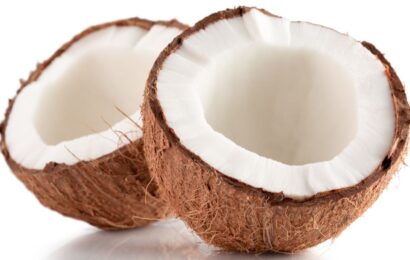There’s not much to dislike about potatoes. Whether baked, mashed, fried or scalloped, this vegetable is a fan fav. In fact, potatoes are so popular that, according to the Maine Potato Board, they’re the “second most consumed food in the United States.” It’s estimated that a person in the U.S. eats 135 pounds of potatoes each year, which is equal to eating about one potato every day, on average.
Potato basics
Potatoes were first cultivated by the Inca Indians in Peru around 8000 B.C. They then made their way to Europe in the early 1500s by way of Spanish conquistadors, and hit the ground running in Ireland in 1589. Potatoes were introduced to the colonies in 1621; we can thank the then Governor of Bermuda for this, who sent two cedar chests full of potatoes (and other veggies) to the Governor of Virginia. But, according to the website Potatogoodness.com, it wasn’t until 1719 when potatoes were grown in the U.S. in New Hampshire. After that, potato growing went full throttle across the United States.
We tend to think of potato varieties as being Russet, red or white. Surprisingly, though, there are more than 4000 varieties of potatoes that come in all shapes and sizes. More than 200 varieties of potatoes are sold in the U.S., including baking (Russet or Idaho), red (Red Bliss), white (New Potatoes), yellow (Yukon Gold), purple and fingerling potatoes (all equally delicious, of course!). Each of these potatoes have unique qualities that make them well suited for different purposes. For example, Idaho potatoes, which are starchy, are best for baking, mashing and frying, but not so great for potato salad.
To get cutting-edge diabetes news, strategies for blood glucose management, nutrition tips, healthy recipes, and more delivered straight to your inbox, sign up for our free newsletter!
Red Bliss potatoes, on the other hand, are moist and waxy, making them ideal for boiling, roasting, soups, stews and potato salad — and not that good for mashing.
You might be wondering about sweet potatoes. Technically, they’re not potatoes. They belong to the same family as morning glories (who knew?), while potatoes are related to tomatoes, eggplant, peppers, tobacco and petunias. More specifically, potatoes are part of the nightshade family, which many people believe are unhealthy because they contain solanine, a substance thought to cause or worsen inflammation.
There’s also some debate as to whether a potato is actually a vegetable. The answer is yes, it IS a vegetable, although, to split hairs a bit, it’s not really a root vegetable. Root vegetables grow in the ground, as do potatoes. But potatoes grow underground on a stem called a stolon. So, since a stolon is not a root, potatoes are considered to be tubers.
Potato nutrition
The poor potato gets a bad rap for many reasons, some of which are not based in fact: It’s thought that they’re fattening, have a high glycemic index, are too high in carbohydrate so they spike blood sugars, are an empty-calorie food, and that only the skin contains nutrients. Yikes!
Let’s take a look at the nutrition content of a Russet potato. One medium, baked (no butter) potato contains:
· 168 calories
· 37 grams of carbohydrate
· 4 grams of fiber
· 4.5 grams of protein
· 0 grams of fat
· 952 milligrams of potassium
· 24 milligrams of sodium
For sure, potatoes contain carbohydrate, but not an over-the-top amount. The primary source of carbohydrate in potatoes is from starch; fiber also contributes to the carb content. The amount of carbohydrate will vary depending on the size and variety of potato.
Potatoes are also free of fat, sodium and cholesterol, and they’re a good source of many key vitamins and minerals, including vitamin C, vitamin B6 and folate. Let’s not overlook protein, either: with almost 5 grams of protein in a medium-sized potato, that’s not half bad! By the way, some of a potato’s nutrients are found in the skin, such as fiber, protein and even a little bit of iron, while the flesh is where potassium, B vitamins and vitamin C hang out.
Keep in mind that how you prepare and what you put on your potatoes will impact a potato’s nutrient content: slathering on a pile of butter and/or sour cream or deep-frying your spuds will significantly increase the calorie and fat content. Example: A medium serving of those famous McDonald’s French fries has 320 calories and 15 grams of fat, along with 260 milligrams of sodium.
And what about those “Bet you can’t eat just one!” Lay’s Potato Chips? One ounce, which is about 15 chips, has 160 calories, 10 grams of fat and 170 miiligrams of sodium, but only 15 grams of carbohydrate. Of course, the key is sticking to just 15 chips!
Potato health benefits
Don’t be too quick to toss those potatoes in your compost heap. They really do provide a number of health benefits, such as:
· A wide range of nutrients, especially vitamins and minerals.
· Antioxidants, like flavonoids, carotenoids and phenolic acids that neutralize free radicals, lowering the risk of chronic diseases.
· No gluten, making them ideal for people with celiac disease or gluten-sensitivity.
· Potassium, calcium and magnesium, which can help promote a healthy blood pressure.
· Fiber, potassium and vitamin C, which can promote heart health.
· Resistant starch, which can improve blood sugar and support digestive health.
Potatoes and diabetes
In terms of diabetes, potatoes are considered to be a starchy vegetable, and fall into the same category as bread, pasta and cereal. However, this doesn’t mean that you have to avoid eating potatoes. As with any carbohydrate food, the key is to keep tabs on the amount of potato that you eat. And the amount that you can eat depends on your own carbohydrate goals. For context, a 15-gram carbohydrate portion of potato is:
· 1/2 cup mashed potato
· 1/2 medium baked potato
· 1 ounce of potato chips (baked or fried)
If your carb goal at a meal is 30 grams, for example, then you can eat 1 cup of mashed potato or 1 medium potato, if you choose.
But what about the dreaded blood sugar spike that potatoes can cause? It’s true that potatoes have a higher glycemic index (GI), ranging from about 60 to 90, depending on the variety of potato and how the potato is prepared. You can lower the glycemic impact of potatoes by:
· Leaving the skin on. The skin contains fiber, which can reduce the glucose-raising effect.
· Roasting and baking potatoes, rather than boiling or mashing them.
· Adding some healthy fat, such as olive oil, to your potatoes.
· Adding a splash of something acidic, such as vinegar or lemon juice, which helps lower the GI.
· Limiting processed potatoes, such as instant mashed potatoes, boxed scalloped potatoes and potato chips.
And here’s another option to consider: As mentioned above, potatoes contain a type of starch called resistant starch. This kind of starch isn’t readily digested, helps feed the good bacteria in your gut, and can prevent blood sugar levels from rapidly rising after a meal. Potatoes naturally contain some resistant starch, and you can increase the resistant starch content even further by cooking the potato and then chilling it. When the starch in the potato is heated, the starch granules swell and gelatinize. When the potato is cooled, some of the gelatinized starch is converted to resistant starch. So cooking up a batch of potatoes, chilling them and then reheating them or making them into potato salad may curb a glucose spike after eating.
As always, whenever you have a concern about any food’s impact on your own blood sugar, make a point to check your glucose about two hours after eating. You might do this a few times after eating the same food or meal, too. For most people the two-hour target blood glucose level is less than 180.
Potato safety
If, for any reason, you are tempted to eat your potatoes raw, you may want to reconsider. There are a number of reasons to eat your potatoes AFTER they have been cooked. Raw potatoes:
· Are bitter and have a starchy texture.
· Contain substances called anti-nutrients that can interfere with nutrient absorption.
· Contain solanine, which can cause nausea, diarrhea, headache, dizziness and hallucinations (potatoes that have green on them or that have been exposed to sunlight have higher concentrations of solanine, so avoid eating them).
· Contain resistant starch, which, when the potato is eaten raw, can cause severe gas and bloating.
Also, never eat the leaves of the potato plant, as they are toxic.
Want to learn more about eating well with diabetes? Read “Improving Your Recipes: One Step at a Time,” “Top Tips for Healthier Eating” and “Cooking With Herbs and Spices.”





